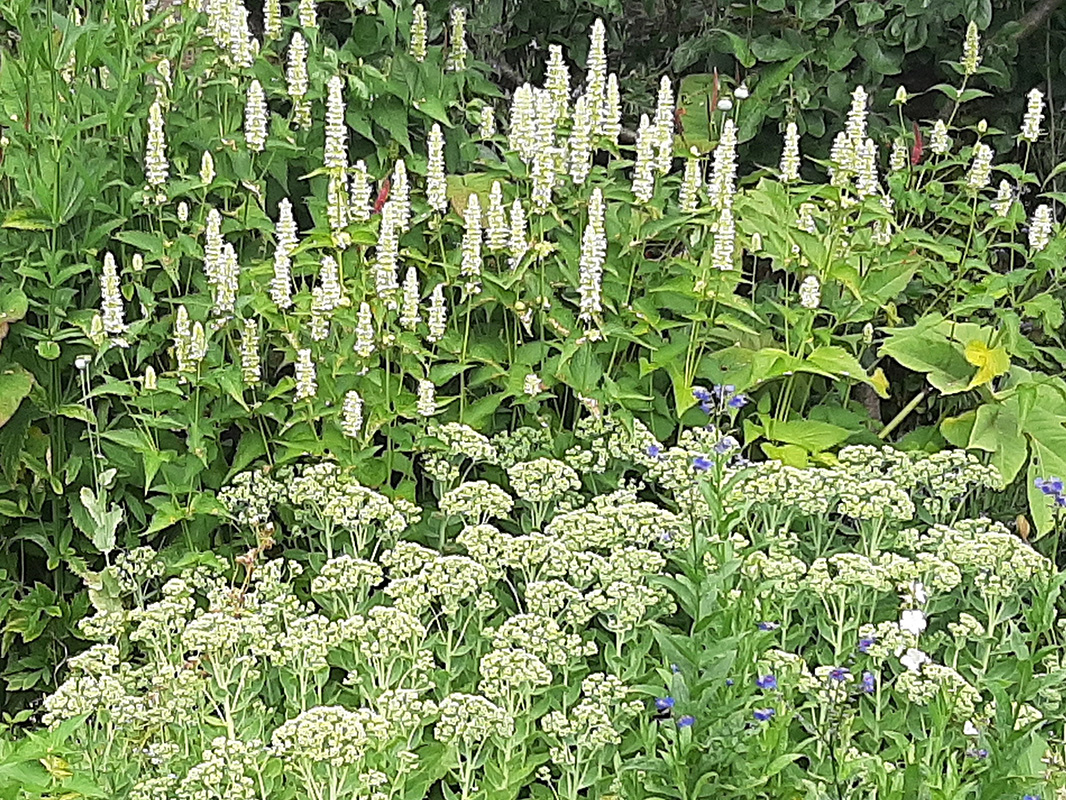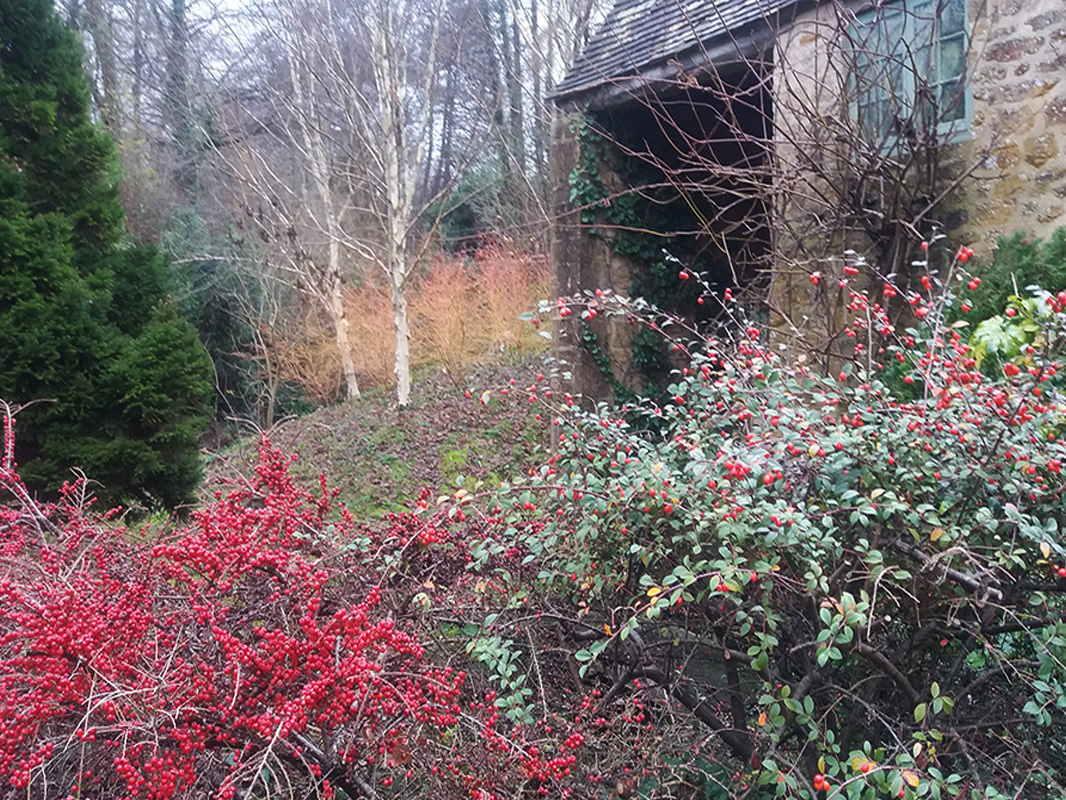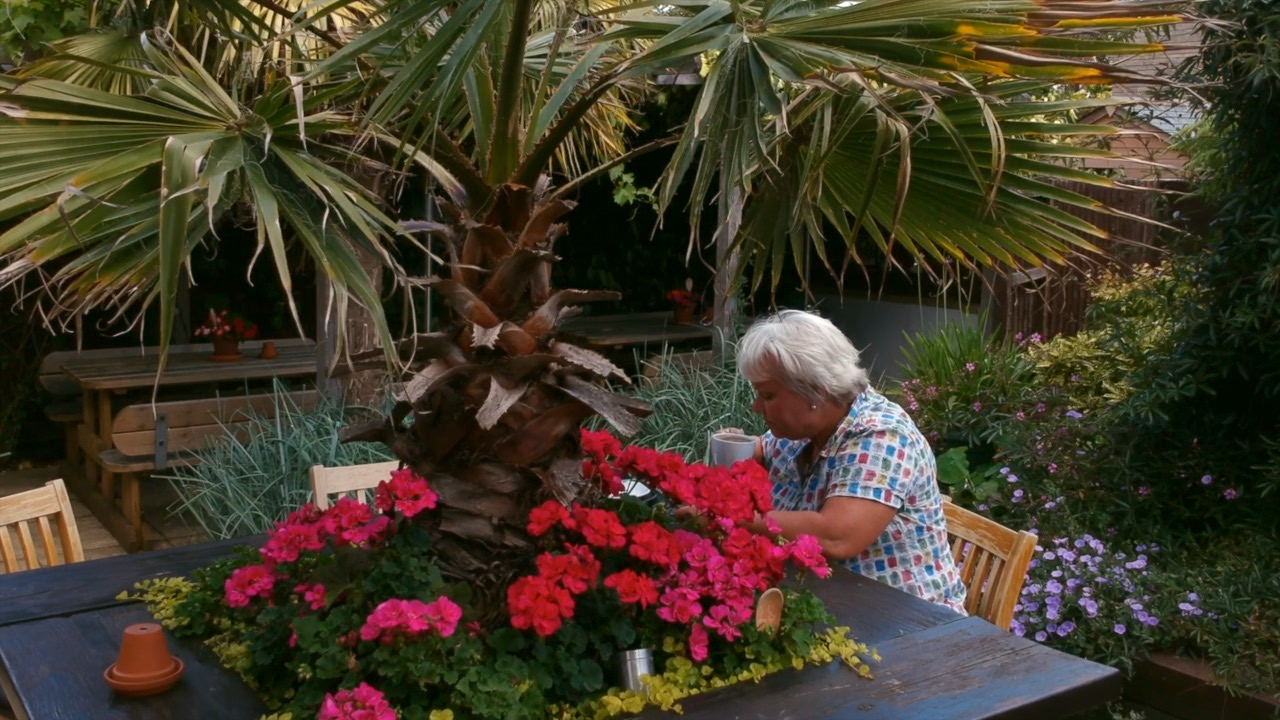What to grow for next year?
After a long hot dry summer, the drought has been broken by many showers of rain, which have swelled my celeriac nicely. I am happy to face the winter and possible Brexit price rises with kale, leeks, parsnips and celeriac on the allotment and potatoes, garlic and onions in the shed and beans in the freezer. Some cheese, eggs and milk and I’ll be fine.
I haven’t done a big shop for weeks, but then I am feeding only myself, and not tiny fussy people who couldn’t find their school shoes anywhere but could spot microscopic bits of onion and mushrooms in a pasta sauce with the outraged holler ‘’yuck, it’s got bits in! I hate bits.” 15 years later – they eat bits just fine.
My thoughts turn to planning my new garden, and clients’ gardens as well. With background of walls, hedges and shrubs, I love to use perennials in borders to ring the changes through the seasons. The catalogues are full of tempting options and so are the garden centres.
I do not use garden centres much for plant purchases, unless for the odd herb or single impulse buy. Seldom do garden centres have more than 8 in a tray of any one variety, which is not enough for a generous group, and expensive at £7 to £8 a pot. While the garden designer in me says we should plant in large swathes, the canny gardener may buy one plant and see how it performs and if it survives a couple of winters, it can be split into a dozen plants in order to make the planned larger group.
This is a good policy – you do not know precisely how the plant will do in your garden, even if it does well in the same area. Plant labels have some vital statistics as to flower colour, height and season. Seldom does any catalogue mention bad habits – they want you to buy the plant.
Google ‘Lysimachia Firecracker’ and the top choice describes the plant with no mention of it being an invasive thug that marches relentlessly through your borders. Not a word about Shasta daisies going over scruffily with tatty brown petals, nor Crocosmia Lucifer always falling over at the base by late September and squashing other plants flat. Try single samples, but you must make some decisions and be prepared to ruthlessly evict or rehome every plant that has given you second thoughts.
This is especially difficult if someone has given you that plant as a present. You are now responsible for its welfare forever more. Many an ailing plant has had the pickaxe poised above it while a client wailed, ‘I can’t get rid of that, my mother gave it to me!’. Much diplomacy and firmness is called for.
For those of you who have the required ruthless streak to de-clutter second rate or ailing plants, here are some of the plants for sunny well drained borders that I have vetted for the last 2 summers. Heave out the tat, and plant something new for next year.
- Agastache Liquorice White. Totally upstanding to 150cm, white flowers in July, the green calyxes are still attractive until mid-September. Self-seeds but not too madly.
- Iris Black Tie Affair. Weeding bearded irises is one of my least favourite jobs as they have zero weed suppressing qualities, but all is forgiven when in June you see the deep hue, the nearest to black a flower can be. 90cm tall
- Leonotis leonurus. it’s a little too tender to be a perennial anywhere in Britain but a sheltered spot on the Cornish Riviera, but treat like a half hardy annual, start from seed indoors, plant out in May and prepare to be quietly astonished. 5 foot of airy upright growth with no tendency to fall over, rich orange petals protruding from round calyxes…do Google it. 160cm tall
- Sanguisorba Lilac Squirrel. A medium height sanguisorba whose floppy behaviour I am prepared to support by sticking a hazel lobster pot over it when young. Once secured around the knees in early May, the July display of soft tails of violet mauve is well worth it. One plant will make a clump a metre high and wide in 2 years. 100cm tall
- Agastache Hummelo. For fronts of borders and small gardens, this plant is less than knee high, with spikes of rich violet flowers. The deckle-edged leaves are an asset to the border as soon as they emerge in May, and when the flowers have gone over by September, the dark brown calyxes are not objectionable. I am going to try pieces in a nearly-wild flower meadow to extend the season of interest. 30cm tall
- Crocosmia Limpopo. Many crocosmias are an unashamed orange. For those unnerved by such brilliance, this Crocosmia has distinctly coral tones. I bought one this year to see if it survives the winter better than my last coral experiment with C. Severn Sunrise. 80 cm tall.



